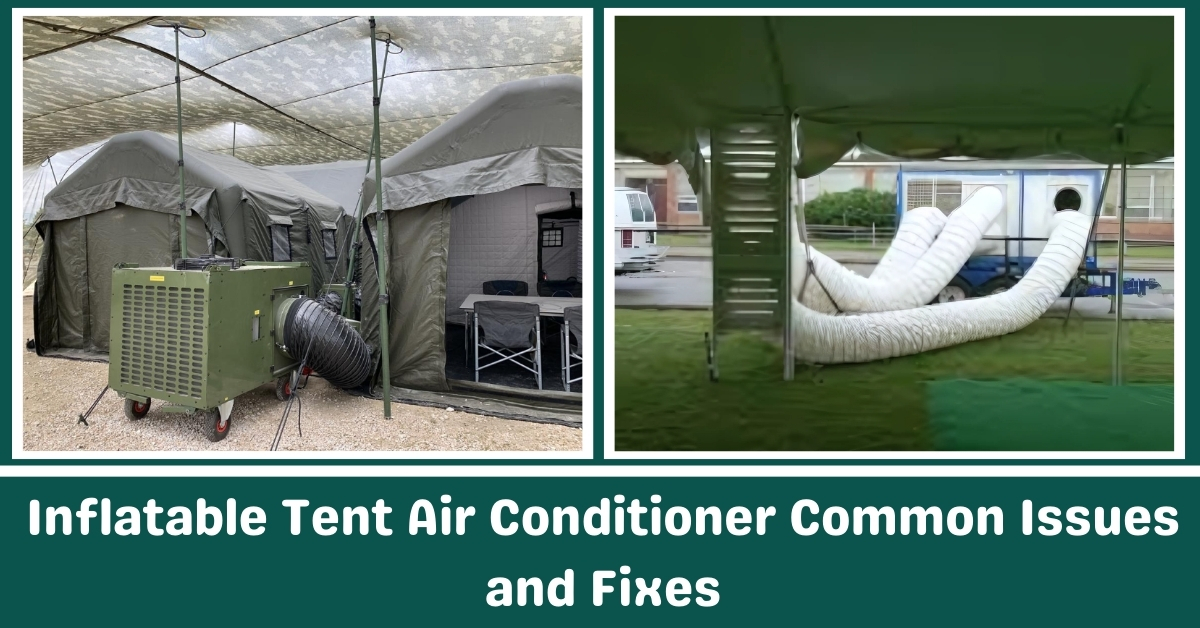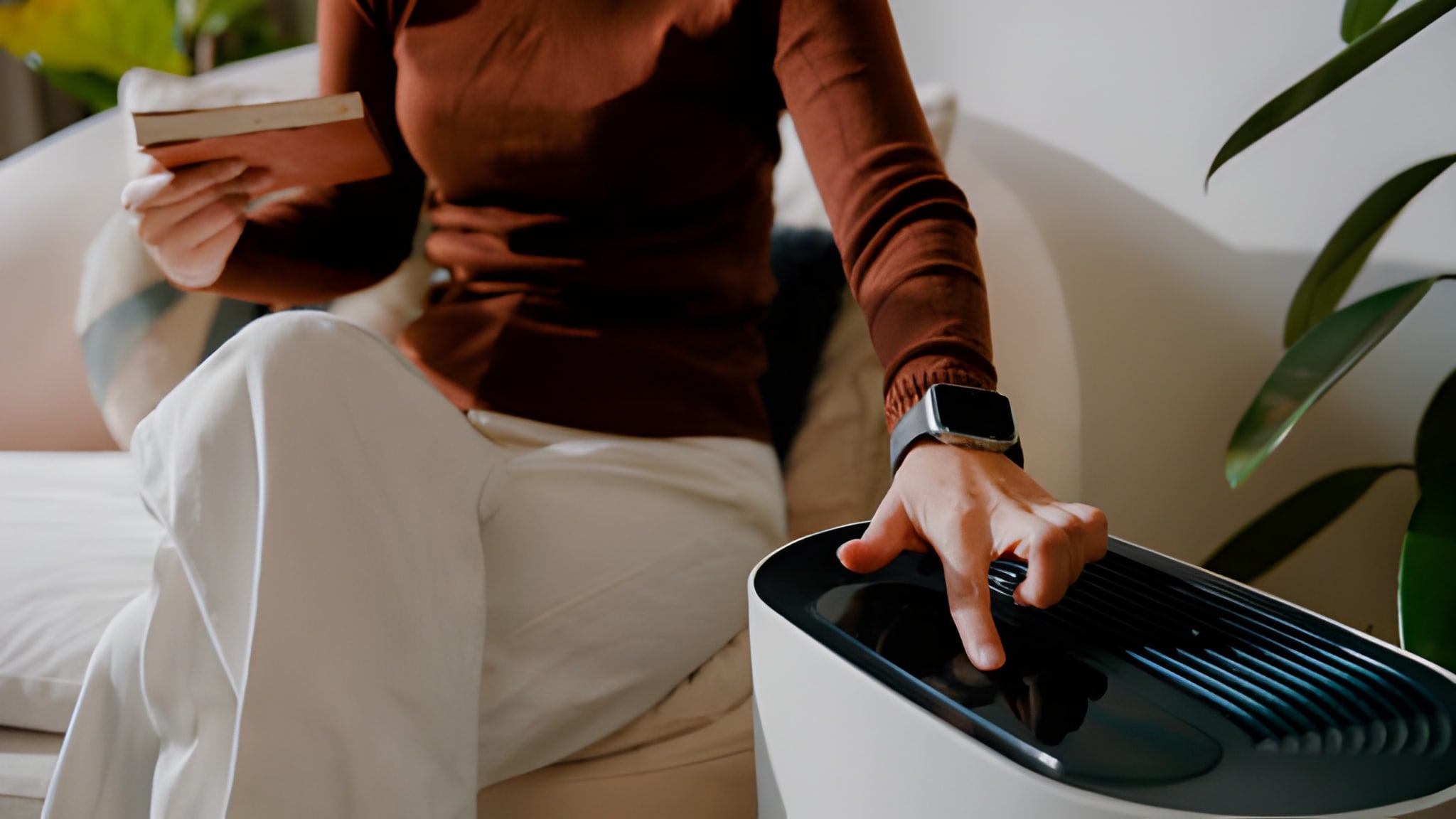Camping with inflatable tents has become increasingly popular due to their lightweight structure and easy setup. But when temperatures rise, staying cool inside these tents becomes a real challenge.
That’s where portable air conditioners come into play they offer a practical solution for beating the heat. However, pairing an air conditioner with an inflatable tent isn’t always smooth sailing.
Many campers experience issues like weak cooling, excess humidity, water leaks, or even power failures. These problems can quickly turn a relaxing outdoor trip into a frustrating experience.
Most of these issues aren’t due to faulty equipment they’re caused by setup errors, mismatched AC units, or environmental factors that can be fixed with the right know-how.
Understanding how inflatable tents and air conditioners interact is key to getting consistent performance. Whether you’re using a compact 5,000 BTU unit or a more powerful setup, small changes can make a big difference.
From insulation tweaks to ventilation tips, learning how to manage airflow, power, and condensation will help you avoid common problems and get the most out of your cooling system.
Inflatable Tent Air Conditioner Common Issues and Fixes
In this guide, we will explain the most common inflatable tent air conditioner issues and give you straightforward, effective solutions to fix them.

1. Poor Cooling Performance
One of the most common problems with using air conditioners in inflatable tents is weak or insufficient cooling. This usually happens when the air conditioner isn’t powerful enough for the tent’s size.
Many portable ACs are designed for small, enclosed spaces with good insulation. Inflatable tents, on the other hand, are made of lightweight material that doesn’t trap cool air efficiently.
If your AC unit has less than 5,000 BTU and your tent is over 100 square feet, you’re likely underpowered.
Other reasons for poor cooling include direct sun exposure and hot ground temperature. Tents that are placed in open areas without shade will heat up quickly.
Thin walls let heat in, making it hard for the AC to keep up.
Fix: Choose an AC with the right BTU rating around 5,000 to 8,000 BTU for small to medium inflatable tents.
Set up the tent in a shaded area, use reflective tarps over the roof, and place insulating mats on the ground. Seal openings and zippers properly to prevent cool air from escaping.
2. Condensation Inside the Tent
Condensation happens when warm air meets cold surfaces. In inflatable tents, this often appears on the inner walls, especially at night.
When the air conditioner is running, the cool air it produces meets the tent’s warm material, causing moisture to collect. This not only feels uncomfortable but can also lead to mold and mildew.
High humidity levels in the environment also contribute. Unlike traditional tents with breathable fabric, inflatable tents with PVC or plastic coatings trap humidity inside.
If you’re using a non-dehumidifying AC, moisture buildup will be a frequent issue.
Fix: Use a portable air conditioner that also has a dehumidifier mode. Ventilate the tent by opening small windows or mesh vents regularly, especially at night.
You can also place small moisture absorbers or silica gel packs inside the tent. Avoid drying wet clothes or towels inside the tent as they increase humidity levels.
3. Power Issues and Tripping Breakers
Portable air conditioners require a good amount of power, especially when they start up. If you’re running the AC on a weak extension cord or from a low-rated generator, it might trip the breaker or fail to start.
This is common in campgrounds where power supplies are shared or unstable.
Running additional devices like lights, fans, or electric stoves on the same circuit as the AC can overload it. Some ACs have a surge current that exceeds the rating of cheap cords or connectors, leading to safety cutoffs.
Fix: Use a heavy-duty extension cord rated for outdoor use (at least 12-gauge). Make sure your power source or generator is capable of delivering consistent wattage above your AC’s requirement.
Avoid plugging multiple appliances into the same circuit. If using a generator, match the startup wattage of your AC to the generator’s surge capacity.
4. AC Doesn’t Fit the Tent Design
Not all inflatable tents are built to accommodate air conditioners. Many models don’t have a designated AC port or exhaust flap, which leads users to force-fit the AC or leave zippers open.
This setup causes major cooling loss and invites insects or moisture into the tent.
A poor fit between the AC and tent can also cause structural issues. Some users try to duct air through small vents or windows, which creates pressure imbalance and airflow blockage.
Others place the AC unit halfway inside the tent, which is both inefficient and unsafe.
Fix: Use tents that are designed with an AC port or consider modifying your existing tent with an aftermarket AC vent cover. When modifying, make sure the opening seals around the AC exhaust tightly.
For window-type ACs, build a simple wooden or foam panel that fits snugly into the vent and supports the unit securely. Always keep the hot exhaust air vented outside the tent.
5. AC Keeps Freezing Up
Freezing of the AC coils happens when airflow is restricted or humidity is too high. It can also occur if the outside temperature drops too low at night.
When the evaporator coil inside the AC gets too cold, moisture freezes around it, blocking airflow and causing the unit to shut down.
Dirty filters, blocked vents, or low fan speed also contribute. Portable units that run continuously in humid environments are especially prone to this problem.
Fix: Clean or replace the AC filters regularly—at least once every camping trip. Keep airflow unrestricted by ensuring the intake and exhaust vents are not blocked by tent fabric.
Avoid using the lowest temperature setting for long periods. Switch the unit to fan mode for 15–30 minutes if you notice it starting to freeze.
Use the dehumidifier function if available to reduce internal moisture.
6. High Noise Levels
Portable air conditioners are louder than most people expect, especially in the quiet of a camping environment. Sound reflects off the inflatable tent’s fabric and seems louder in the enclosed space.
Some units produce noise from fans, compressors, or vibrations against the ground.
The constant hum or clattering can disrupt sleep and reduce the overall comfort of your trip. If you’re camping near others, it might also be a nuisance to neighboring tents.
Fix: Place the AC on a vibration-dampening mat or foam pad to reduce mechanical noise. Choose models that are labeled as “quiet operation” with a decibel rating under 55 dB.
Use earplugs or white noise machines if you’re sensitive to sound. Position the AC slightly outside the tent with ducts running in, which significantly lowers interior noise levels.
7. Water Leakage Around AC
Many portable air conditioners collect moisture from the air and either evaporate it through the exhaust or collect it in a tank. When the tank is full and not emptied in time, it overflows and leaks water.
Improper leveling of the unit can also lead to drainage issues. In inflatable tents, this can soak the floor, damage bedding, or cause slipping.
Another source of leaks is condensation forming around poorly insulated ducting or intake tubes, especially when warm, moist air hits the cold surfaces.
Fix: Check the water tank regularly and empty it before it overflows. Use a drainage hose if your unit supports continuous drain mode. Ensure the AC is level and positioned on a stable, flat surface.
Insulate the intake and exhaust tubes to reduce condensation on the outside. Keep absorbent mats or trays beneath the unit to catch any unexpected drips.
8. Difficulty Maintaining Pressure in Inflatable Tents
Inflatable tents rely on internal air pressure to keep their structure. If you have a poorly sealed tent, high internal temperature or external wind can affect air pressure and slightly deflate the structure.
Using a high-output air conditioner inside can disturb the pressure balance, especially if vents are not properly managed.
This can cause the tent to sag or become unstable, especially at connection points. A drop in pressure might also be due to a slow leak, which becomes more noticeable when the tent cools rapidly.
Fix: Regularly check the inflation level of your tent, especially after cooling it down. Use a hand pump to top up any air beams if needed. Seal all zippers, windows, and vents during AC use to avoid pressure escape.
Avoid pushing the AC exhaust through a small opening that might disturb the airflow balance. Make sure all connections are tight and check for tiny punctures that may be leaking air slowly.
Bonus Tips for Better Cooling
Besides fixing the issues above, there are several practical ways to improve your cooling setup without upgrading your entire system.
- Use Reflective Tarps: Cover your tent with a reflective tarp or emergency blanket during the day to block sunlight and reduce heat gain.
- Choose the Right Tent Location: Set up camp under trees or shaded areas to avoid direct sunlight. Ground temperature also affects cooling, so placing the tent on grass is better than asphalt or bare soil.
- Add Internal Insulation: Lightweight insulation panels or reflective bubble wrap can be placed on walls or ceilings to help retain cool air. Some campers use sleeping pads on tent walls for extra insulation.
- Improve Airflow Management: Place a small fan inside the tent to circulate air more efficiently. It helps reduce hot spots and improves AC performance. Make sure hot air from the AC exhaust isn’t blowing near the tent intake vents.
- Ventilate During the Day: When the AC is off, open all vents and let hot air escape during the cooler parts of the day or early evening before you start cooling.
- Keep Doors Closed: Minimize the number of times you open the tent door, especially during peak cooling hours. Every opening lets in warm air and reduces efficiency.
Conclusion
Using an air conditioner with an inflatable tent can significantly improve your comfort during hot weather camping, but only if the setup is done correctly.
Most common issues like poor cooling, condensation, water leaks, or power interruptions stem from mismatched equipment, improper installation, or environmental factors that are easy to overlook. Fortunately, these problems often have simple, practical solutions.
By choosing the right BTU-rated unit, ensuring proper insulation and ventilation, and maintaining your AC system, you can enjoy reliable performance without hassle.
Remember that inflatable tents are not as insulated or sealed as traditional structures, so even small adjustments like using reflective tarps, placing your tent in the shade, or checking your power source can make a big difference.
Preventative maintenance like cleaning filters, draining water tanks, and checking for air leaks can also extend the life of your AC and improve cooling results.
In short, the key to a cool and comfortable camping trip lies in preparation, setup, and routine checks. With the right approach, you can avoid these common pitfalls and keep your inflatable tent cool, dry, and efficient throughout your outdoor adventures.





